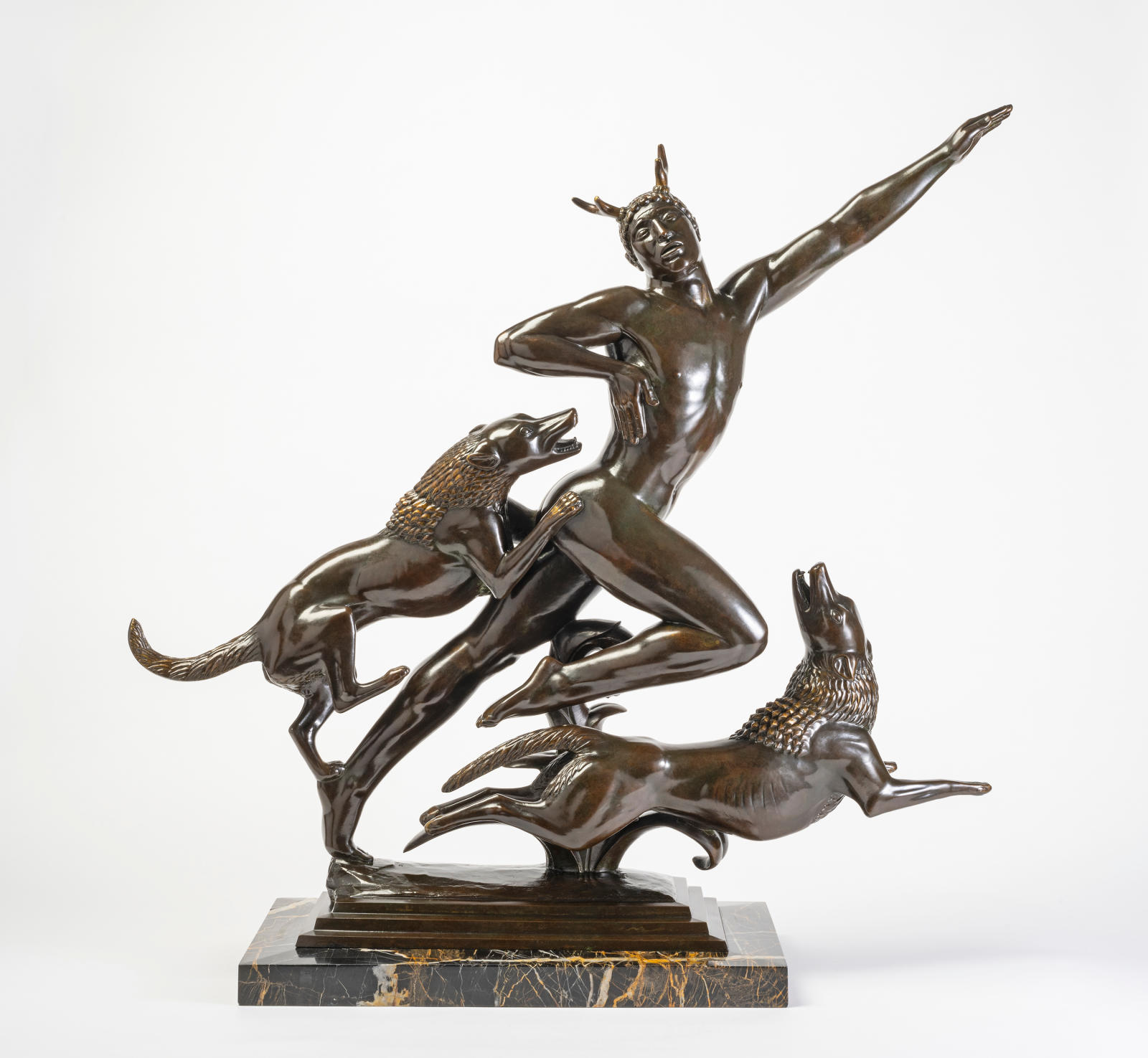artist
Paul Manship’s significance as one of America’s foremost sculptors of the early twentieth century lay in his ability to combine a modernist approach to form within the bounds of figurative art. The variety of his subjects, the infinite beauty of his lines and the pure delight he found in the human figure all contribute to his outstanding reputation.
Manship has been credited with revitalizing the classical tradition and others have countered that he freed the ties that bound American sculpture to realism. It has been argued whether it was he or Saint-Gaudens who ushered in the “national style.” The answer lies perhaps in extraordinary number of students and artist’s who were to be so greatly shaped by Manship’s style.
Manship stands as one of America’s most important American sculptors and certainly as the champion of the Deco style and the “modern aesthetic.” France experienced a golden era in the 19th century between architecture and sculpture and this occurred in America between 1910 and 1935 with Manship was a prominent part of it. Some of New York city’s most celebrated spots are Manship commissions such as the Prometheus Fountain at Rockefeller Center, the reliefs on the AT&T Building, the Rainey Memorial Gates at the Bronx Zoo and many more.
Description
Actaeon was conceived in 1923 while Manship was living in Paris and at the height of his artistic career. It is one of Manship’s most dramatic compositions. As in his famous Dance and Gazelles, he employs three forms all in motion. The kinetic positioning of the hounds and the and the Greek inspired chiseling used on Actaeon’s hair, and the necks and tails of the hounds creates a tension that transcends the gentler and more lyrical feel of Dance and Gazelles. He was challenging the conventional boundaries of composition as he chose to have neither hound have a paw on the ground. The most striking feature of the sculpture is its strong diagonal thrust forward and up. Off of this diagonal are many triangular relationships that make this one of his most sophisticated and intellectual compositions.
Actaeon was a young hunter who stumbles upon Artemis by a pool in the woods. While he was caught spellbound by her beauty, she was furious at being spied upon, bathing with her nymphs. She dips her hand into the pool and splashes him with water. As the drops landed upon his head, antlers sprouted, and he transitions to a stag. His hounds leap at him and he runs as they begin their assault, and he is unable to utter a human sound to call them off. Artemis’ revenge was complete, as no mortal was to live to boast that he had seen the goddess bathing. This is a companion piece to Manship’s “Diana” in which the goddess is in pursuit and has released a bow meant for Actaeon.
provenance
Estate of Margaret Leech Pulitzer, New York
Sotheby Parke-Bernet New York, December 1975
Wolf Family Collection No. 0047 (acquired from the above) 1975-2023
Sotheby's New York, April 2023
exhibitions
literature
Exh. Cat., St. Paul, Minnesota, Minnesota Museum of Art, Changing Taste in America, 1985, no. 46, pp. 30, 72-73, 75, illustration of another cast
John Manship, Paul Manship, New York, 1989, pp. 101, 111, 113, another cast mentioned
Susan Rather, Archaism, Modernism, and the Art of Paul Manship, Austin, 1993, p. 160, another cast mentioned







